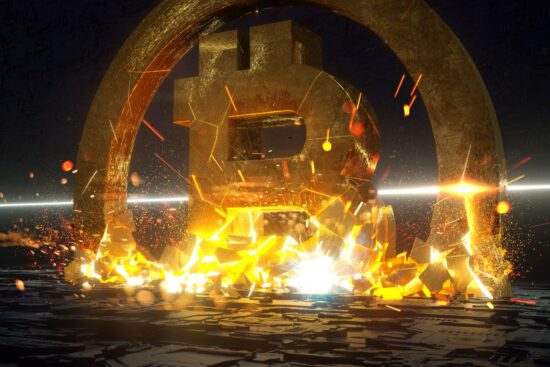
Howdy, Crypto Prodigies? We thought of adding one more category to our already extensive list of Blockchain topics. So, our topic of the day is the impact of crypto mining hardware on Blockchain security.
This topic focuses on how, in the model of the virtual fuss of transactions, a stealthy figure is exploiting the Blockchain vulnerabilities. Blockchain has an army of unsung heroes: a decentralized network of crypto miners. These are the individuals who are verifying transactions across a distributed ledger. These miners are equipped with powerful computational resources, ensuring the security of every transaction.
Yet, the scene continues to change rapidly. As the need for productivity and profitability spikes, crypto-mining equipment revolutionizes swiftly. The emergence of ASICs, designed for specific hashing algorithms, offers unmatched speed and productivity improvements, transforming mining capabilities.
However, this evolution presents fresh obstacles—centralization threats as mighty mining groups gain clout, potentially damaging blockchain’s distributed spirit. In this fine balance of pioneering tech and security, the impression of crypto mining equipment on blockchain reliability remains essential. Each tech advancement requires a careful look into its effects on network robustness and decentralization.
Join our exploration into this constantly progressing domain where technology contributes to shielding digital economies. Let’s get into the impacts of crypto mining hardware:
Increased Network Strength
The power of crypto mining hardware directly affects the security of the Blockchain network it supports. More powerful hardware leads to a higher Hash Rate, a measure of the computational power directed towards validating transactions.
This higher hash rate makes brute-force attacks more difficult and expensive to execute. Just imagine a Blockchain secured by a low hash rate. Imagine someone trying to mess with a record of transactions by fiddling with blockchain data. That’s really tough because of this thing called a high hash rate. Keen to change the data? You’d need a ton of computational muscle to make a dent. It’s practically impossible.
There’s one particular worry: the 51% attack. In this ‘what if?’ event, a bad guy takes control of over half of the network’s hash rate. Suddenly, they can twist transactions, block the good ones, and even potentially rewrite old ones.
But hey, there’s a silver lining! A high hash rate makes a 51% attack less likely. The sheer amount of power and resources needed becomes a massive roadblock for most ill-intentioned people. Now, this high hash rate does have a downside. It may create what they call centralization. Here, mining pools come into play. These are groups of crypto miners who band together, pooling their computational resources.
The end goal? To increase their odds of getting rewards. Pools boost individual miners’ efficiency, but they can also bring a little worry about centralization. If just a few hefty mining pools own a sizable slice of the hash rate, they could gain control over the network. That could undercut the bedrock principle of decentralization, a key trait of blockchain technology.
ASICs Rising
Crypto mining hardware has evolved, bringing us to Application-Specific Integrated Circuits, or ASICs. They’re special chips made to mine cryptocurrency. Unlike regular hardware like CPUs or GPUs, ASICs are more efficient and yield a higher hash rate. The perks of ASICs are big. They boost network security with their authoritarian hashing power. Plus, they’re efficient, which means miners pay less to operate. But ASICs ruling everything isn’t all positive.
Security Enhancements
Blockchain developers can implement security measures beyond relying solely on mining hardware. This includes regular code audits, bug bounty programs to incentivize finding and fixing vulnerabilities, and potentially implementing other security models.
A Balancing Act
The ideal future of crypto mining hardware lies in striking a balance between:
1. Secure Networks: Maintaining a high hash rate to ensure network security against brute-force attacks and 51% attacks.
2. Decentralization: Avoiding an overly centralized mining landscape where control rests with a few large entities.
3. Energy Efficiency: Minimizing the environmental impact of crypto mining through energy-efficient hardware and renewable energy sources.
By considering all these aspects, the future of crypto mining hardware can contribute to a more powerful Blockchain Ecosystem.
The Future of Mining and Security
How does the future of crypto mining hardware look? It’s about tackling today’s challenges with innovative, sustainable solutions.
Sustainable Solutions
Developers are busy making mining hardware and protocols that use solar energy. Using green energy sources for mining can lessen its impact on the environment.
Wrapping Up!
Finding Balance in Blockchain Security. How crypto mining gear and blockchain security intertwine is a bit tricky. Stronger hardware provides stronger networks thanks to high hash rates, but it also introduces problems like possible centralization and increased power use.
Key Points to remember
Beefed-up mining gear helps tighten the security. It makes brute-force attacks and 51% attacks a whole lot tougher. However, the rule of mining pools and ASICs may lead to centralization. This challenges the key idea of blockchain networks being decentralized. Power use is a rising issue with crypto mining gear, especially for ASICs.
A Peek to What Could Be
Yes, there are hurdles. But the future is bright. More power-saving mining gear and protocols are in the works. On top of that, there’s a push to explore other consensus methods like Proof-of-Stake. This could pave the way for a greener future in blockchain tech.
Moreover, the sustained efforts of blockchain developers, security buffs, and the crypto mining industry can step up security. How? This is done by depending on strong hardware and expanding to routine code checks, rewarding bug hunters, and even blending different consensus methods for a hybrid security model. To cap it off, a future where secure, green, and decentralized blockchain systems flourish depends on joint efforts to tackle these challenges. By keeping innovation ongoing and staying responsible in development, crypto mining gear can progress to positively boost the future of blockchain security.
Terms to Remember
Hash Rate: Hash Rate is how we measure the power used to keep a blockchain network safe.
A 51% Attack: This is an idea in which a bad actor could control more than half of the network’s hash rate, which could allow them to manipulate transactions.
Mining Pool: This is a team of miners working together. By sharing their power, they boost their chances of getting mining rewards.
ASIC (Application Specific Integrated Circuit): This is a chip built for crypto mining.
If you want to learn more about Blockchain technology and crypto, check out our Blogs section. Thank you for staying tuned with the Blockchainist!






